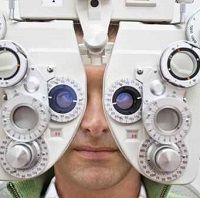Article
Cataracts: Technology Takes on Ancient Problem
Author(s):
Cataracts have been around for a long time, but methods of correcting vision in people who have them have changed. Lisa Park, MD, Clinical Associate Professor, Department of Ophthalmology NYU Langone Medical Center and Chief of Service at Bellevue Hospital Center discusses the options.

Lasers and ultrasound have made using traditional surgical blades and needles to remove cataracts obsolete, said Lisa Park, MD, Clinical Associate Professor, Department of Ophthalmoloy, NYU Langone Medical Center and Chief of Service at Bellevue Hospital Center.The latest technology is the femtosecond a very short-pulse high-energy laser used in refractive surgery like the LASIK procedure. Ophthalmologists are now offering it to cataract surgery patients, Park said.
“It’s a small pulse of light that can make very small cuts,” she said. “It makes very precise cuts and helps center the lens” she said, but there have been no studies showing it is safer or more efficient that standard techniques.
The cost of using it is not covered by insurance, including Medicare. “There’s some controversy over whether there is a significant improvement with femtosecond laser,” she said.
Cataracts, the condition where the natural lens of the eye becomes opaque, has been around at least since ancient times, she said. Usually it is because of aging, but other causes and contributing factors include use of steroids (inhaled, oral, and creams) inflammation in the eye from conditions like sarcoidosis and rheumatoid arthritis, and rarely babies are born with cataracts.
And just to be clear, "they are not caused by watching too much television, playing video games, or staring at a computer screen," Park said.
Patients who have them removed then have several options to restore vision, none of them perfect.
Replacing the impaired natural lens with an artificial intraocular lens fixes the patient’s focus permanently, but involes making choices. There, are lenses that mean these patients will no longer need eyeglasses. But that means choosing between monovision, where one lens gives near vision and one distance, or multifocal, in which the new lenses work more like progressive lenses in eyeglasses. There are also pseudo-accommodating lenses, which are hinged and meant to work with the eye muscles to work more like a natural lens. How to choose is the problem.
“I tell my patients everything comes at a cost,” Park said. Monovision means the brain has to adjust to the difference in the 2 eyes’ focus. “About 50% of people can tolerate this,” she said. Trying that out first with a near-vision and far-vision pair of contacts is the best way to see if monovision will be comfortable.
The multifocal lenses sometimes cause patients to complain of glare and seeing circles in bright light.
Park said researchers are just starting to look at ways to prevent cataracts from forming.
“The field is wide open and I hope to be involved,” she said.
In the videos below, Park talks about her work and the future of ophthalmology.




